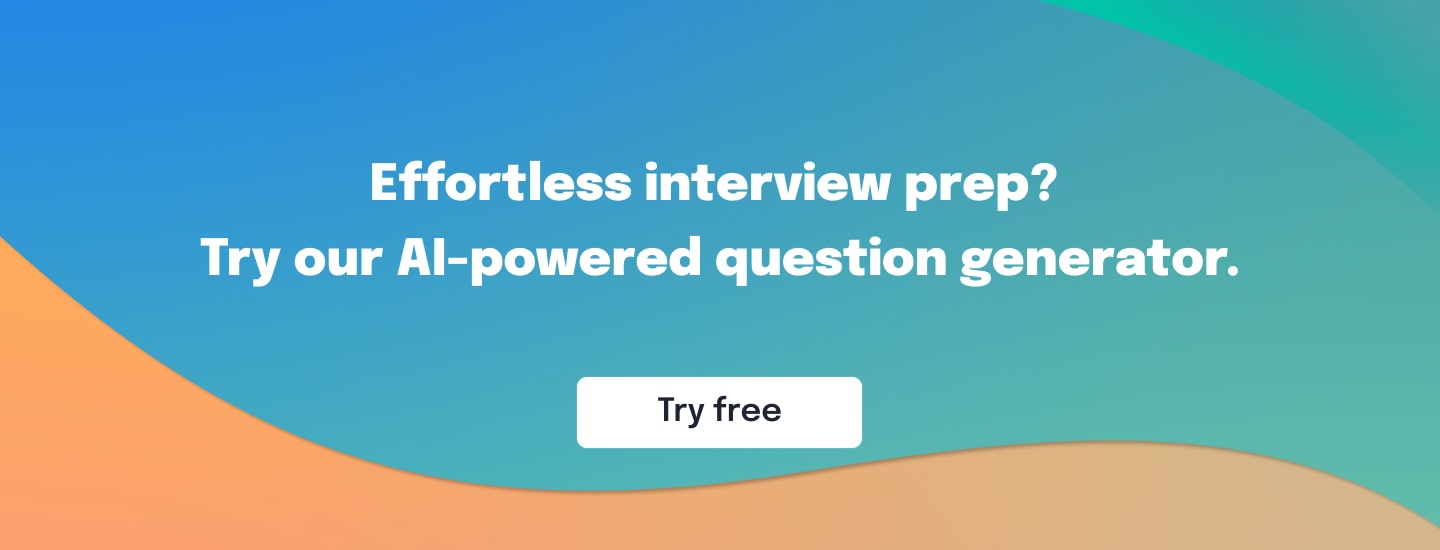When you’re in the process of hiring a Senior React.js developer, it’s crucial to tap into their skills and experience. React.js is a big deal in web development, and finding the right fit means checking their know-how across various aspects.
React.js has emerged as a linchpin in web development, boasting a vast community of developers. Its prominence is underscored by the adoption of industry giants such as Netflix, Pinterest, Uber, and Airbnb. React.js’s omnipresence in the developer landscape signifies a monumental opportunity for those seeking to hire React.js developers, solidifying its role as an interface-enhancing powerhouse. Our research delves into React.js’s notable trajectory, with insights revealing that it vies for dominance alongside Node.js as the most favored UI framework.
In these interview questions, we cover everything from the basics of React.js to how they handle performance, deal with data, and manage different languages. These questions are like a toolkit to help you understand if a candidate has the right skills to build awesome React applications.
So, let’s dive into questions to find the perfect Senior React.js developer for your team.
Table of Contents
1: Can you explain the significance of React Hooks in modern React.js development and how they differ from class components?
Expected Answer: React Hooks are essential for functional component development, offering state and lifecycle management. They simplify code, replacing class-based components with cleaner, reusable functions.
Explanation: This question assesses the candidate’s understanding of modern React.js development practices, as Hooks have become the standard for state management and side effects.
1.1: Share an example of a real-world project where you significantly benefited from using React Hooks, and how did it improve the project’s maintainability and performance?
Expected Answer: In a recent e-commerce project, we replaced class components with Hooks. This made the codebase more concise and easier to test, resulting in faster development and better performance.
Explanation: Candidates should provide practical evidence of how Hooks can enhance project development and maintainability.
1.2: Are there any scenarios where you’d still prefer to use class components over functional components with Hooks?
Expected Answer: Class components may be necessary for integrating with third-party libraries or migrating legacy code, but in new development, Hooks are more efficient.
Explanation: This question evaluates the candidate’s ability to discern when to use Hooks and when class components are more suitable, showcasing their decision-making skills.
2: How do you manage application state in React, and what are the advantages of using a state management library like Redux or Mobx?
Expected Answer: In React, state management can be done using built-in state or through libraries like Redux or Mobx. These libraries offer centralized, predictable state management and simplify data flow in large applications.
Explanation: This question assesses the candidate’s familiarity with state management in React and their awareness of when to introduce external state management libraries for complex applications.
2.1: Can you describe a scenario where using Redux or Mobx greatly improved the scalability and maintainability of a React application you worked on?
Expected Answer: In a social media platform project, we used Redux to manage user authentication and feed data. It centralized data handling and made it easier to scale the application.
Explanation: Candidates should demonstrate how they leverage state management libraries to enhance large-scale React applications.
2.2: What are the potential downsides or trade-offs when using Redux or Mobx for state management, and how can these challenges be mitigated?
Expected Answer: One downside is increased boilerplate code. However, this can be mitigated by using helper libraries like Redux Toolkit to streamline development.
Explanation: This question evaluates the candidate’s understanding of the trade-offs involved in using state management libraries and their knowledge of best practices to overcome associated challenges.
3: Can you explain the concept of virtual DOM in React and how it contributes to the framework’s performance?
Expected Answer: The virtual DOM is a lightweight copy of the actual DOM. React uses it to efficiently update only the parts of the page that have changed, resulting in improved rendering performance.
Explanation: Assessing the candidate’s understanding of virtual DOM demonstrates their knowledge of React’s core principles and its impact on rendering optimization.
3.1: How does React reconcile the virtual DOM with the actual DOM, and why is this reconciliation process crucial for React’s performance?
Expected Answer: React’s reconciliation process involves comparing the virtual DOM with the real DOM and updating only the changed elements. This process reduces costly direct manipulation of the actual DOM and enhances rendering speed.
Explanation: Candidates should provide insight into the technical workings of React’s virtual DOM reconciliation process and its performance benefits.
3.2. Follow-up Question (continued): Can you describe a situation where you optimized a React application’s performance by strategically using the virtual DOM, and what techniques did you apply?
Expected Answer: In an e-commerce project, we used the PureComponent and shouldComponentUpdate methods to fine-tune component rendering. This reduced unnecessary re-renders and significantly improved the application’s performance.
Explanation: This follow-up question allows candidates to provide a practical example of how they applied virtual DOM optimization techniques to enhance a React application’s performance.
4: How do you handle routing in a React application, and what are the advantages of using a routing library like React Router?
Expected Answer: Routing in React can be managed using built-in solutions or libraries like React Router. React Router simplifies client-side navigation and offers features like route nesting and dynamic routing.
Explanation: This question evaluates the candidate’s knowledge of client-side routing in React and their ability to choose and utilize routing libraries for efficient navigation.
4.1: Share an experience where React Router or a similar library played a crucial role in simplifying navigation within a complex React application.
Expected Answer: In a dashboard application, we used React Router to manage user authentication routes and dynamically load dashboard components based on user roles. This streamlined navigation and ensured security.
Explanation: Candidates should demonstrate how they effectively employed routing libraries to address complex navigation scenarios in React applications.
4.2: Are there scenarios where you might consider client-side routing less suitable, and how would you approach routing in those cases?
Expected Answer: For SEO optimization or scenarios requiring server-side rendering, client-side routing might not be ideal. In such cases, Next.js or similar frameworks with server-side rendering capabilities could be more suitable.
Explanation: This question evaluates the candidate’s ability to identify situations where client-side routing might not be the best choice and their knowledge of alternative solutions, emphasizing their adaptability.
5: How do you ensure the accessibility (a11y) of a React application, and why is it important in modern web development?
Expected Answer: Accessibility in React involves semantic HTML, ARIA attributes, and keyboard navigation. It’s vital for inclusive web development, ensuring that all users, including those with disabilities, can access and interact with the application.
Explanation: This question assesses the candidate’s commitment to inclusive web development and their awareness of the techniques and standards for making React applications accessible.
5.1: Can you provide an example of how you improved the accessibility of a React application you worked on, and what impact did it have on the user experience?
Expected Answer: In a healthcare application, we enhanced accessibility by adding ARIA labels and improving keyboard navigation. This made the application usable by individuals with disabilities, leading to positive user feedback and compliance with accessibility standards.
Explanation: Candidates should share practical experiences where they’ve successfully enhanced accessibility and how it positively affected the user experience.
5.2: What tools or libraries have you used to assess and ensure the accessibility of React applications during development?
Expected Answer: We’ve used tools like Axe, eslint-plugin-jsx-a11y, and manual testing with screen readers to assess and ensure accessibility compliance during development.
Explanation: This question evaluates the candidate’s familiarity with tools and techniques for assessing and ensuring accessibility compliance in React applications, highlighting their commitment to best practices.
6: Describe your experience in optimizing the performance of React applications. What tools, techniques, or strategies have you employed to enhance rendering speed and reduce load times?
Expected Answer: Performance optimization involves minimizing unnecessary renders, lazy loading components, code splitting, and using tools like React Profiler and Lighthouse. These strategies result in faster load times and smoother user experiences.
Explanation: This question evaluates the candidate’s ability to identify and address performance bottlenecks in React applications and their familiarity with performance optimization tools and techniques.
6.1: Can you share a specific example of how you improved the performance of a React application by applying one or more optimization techniques?
Expected Answer: In an e-commerce platform, we implemented code splitting to load product images only when they’re in the viewport. This significantly reduced initial load times, resulting in improved user engagement and conversion rates.
Explanation: Candidates should provide practical examples showcasing their expertise in React application performance optimization.
6.2: How do you handle memory management and prevent memory leaks in long-running React applications?
Expected Answer: Effective memory management involves cleaning up event listeners, avoiding circular references, and using React’s built-in tools like componentWillUnmount for cleanup. These practices ensure a more stable and memory-efficient application.
Explanation: This question assesses the candidate’s awareness of memory management best practices in React, a crucial aspect of maintaining application stability.
7: Have you worked with state management libraries like Mobx, Recoil, or Redux Toolkit in React projects? Can you discuss the advantages and disadvantages of different state management approaches?
Expected Answer: Different state management libraries offer varying trade-offs. Mobx provides simplicity and reactivity, while Redux Toolkit offers structure and robustness. Understanding these trade-offs helps choose the right tool for each project.
Explanation: This question evaluates the candidate’s familiarity with alternative state management libraries and their ability to select the most suitable approach based on project requirements.
7.1: In a scenario where you have to choose between using Redux Toolkit and Mobx for state management in a new React project, what factors would influence your decision?
Expected Answer: Considerations would include project size, complexity, team familiarity, and performance requirements. Redux Toolkit might be preferred for larger projects requiring predictability, while Mobx could be chosen for simplicity in smaller applications.
Explanation: Candidates should showcase their decision-making skills in selecting the appropriate state management library based on project-specific criteria.
7.2: Can you describe a situation where you implemented global state management in a React application, and how did it simplify data sharing between components?
Expected Answer: In a collaborative workspace application, we used Redux Toolkit to manage user authentication and workspace data. This centralized approach streamlined data sharing between components, ensuring consistency and reducing prop drilling.
Explanation: This question evaluates the candidate’s practical experience in implementing global state management and its impact on component communication and code maintainability.
8: Discuss your experience with server-side rendering (SSR) or static site generation (SSG) in React applications. How do these approaches benefit SEO and user experience?
Expected Answer: SSR and SSG enhance SEO by providing search engines with pre-rendered content. SSR delivers content on each request, while SSG generates static pages at build time, reducing server load and improving page load speed.
Explanation: This question assesses the candidate’s knowledge of SSR and SSG, highlighting their significance for SEO and user experience enhancement.
8.1: Can you share a project where you implemented SSR or SSG in a React application and explain how it positively influenced SEO and user interaction?
Expected Answer: In an e-commerce website, we implemented SSG to pre-render product pages. This led to faster page loads, improved search engine rankings, and higher user engagement due to quicker access to product information.
Explanation: Candidates should provide real-world examples of how SSR or SSG positively impacted a project’s SEO and user experience.
8.2: Are there any scenarios where you might consider a hybrid approach, combining both server-side rendering (SSR) and static site generation (SSG) in a React application? Can you provide an example of such a scenario and its advantages?
Expected Answer: In cases where certain pages require dynamic data while others can be pre-rendered, a hybrid approach can be beneficial. For example, an e-commerce site might use SSG for product catalog pages but SSR for user-specific content like a shopping cart. This combines the benefits of both approaches.
Explanation: This question evaluates the candidate’s ability to identify scenarios where a combination of SSR and SSG can offer the best of both worlds in terms of performance and dynamic content rendering in React applications.
9: How do you handle internationalization (i18n) and localization (l10n) in React applications, and what are the benefits of providing multi-language support?
Expected Answer: Internationalization involves making an application adaptable to different languages and regions. React-intl and i18next are commonly used libraries for this purpose. Offering multi-language support expands the application’s user base and market reach.
Explanation: This question evaluates the candidate’s awareness of i18n and l10n practices in React and their understanding of the benefits of catering to a diverse audience.
9.1: Can you describe a project where you implemented internationalization and how it improved user engagement and accessibility for global audiences?
Expected Answer: In a travel booking platform, we integrated React-intl to provide content in multiple languages. This resulted in increased user engagement and bookings from non-English-speaking regions, contributing to business growth.
Explanation: Candidates should provide practical examples showcasing how they enhanced user engagement and accessibility through internationalization in React applications.
9.2: What strategies do you employ to ensure the efficient management of translated content and maintainable code in multi-language React projects?
Expected Answer: To manage translations efficiently, we use translation files (JSON or YAML), automate the extraction of keys, and use translation management tools like Crowdin. Code maintainability is ensured by organizing components and keeping translation logic separate from presentation components.
Explanation: This question evaluates the candidate’s approach to managing translations and maintaining code quality in multi-language React projects.
10: In a collaborative development environment, how do you ensure code quality and consistency in React projects, and what role do code reviews play in achieving these goals?
Expected Answer: Code quality is maintained through linting with tools like ESLint and following coding standards. Code reviews are essential for catching issues early, sharing knowledge, and ensuring adherence to best practices and project conventions.
Explanation: This question assesses the candidate’s commitment to code quality and their understanding of the role of code reviews in collaborative React development.
10.1: Can you describe a situation where code reviews played a crucial role in preventing bugs or improving the overall quality of a React project, and how did it impact the project’s success?
Expected Answer: During a code review, a team member identified a potential memory leak issue. This discovery prevented a major production issue, demonstrating the critical role of code reviews in ensuring project success and reliability.
Explanation: Candidates should provide concrete examples of how code reviews positively influenced a project’s outcome.
10.2: How do you handle situations where team members have differing opinions on coding standards or approaches in a React project, and how do you reach a consensus to maintain consistency?
Expected Answer: In such cases, we initiate discussions to understand each perspective and evaluate the pros and cons. Consensus is reached through constructive dialogue and alignment with project goals. Documenting agreed-upon standards and practices helps maintain consistency.
Explanation: This question evaluates the candidate’s ability to handle conflicts related to coding standards and their approach to reaching consensus for code consistency.
Final Thoughts
In your quest to find the right Senior React.js developer, these interview questions serve as valuable tools to uncover their depth of knowledge and practical experiences. React.js is at the forefront of modern web development, and the ideal candidate should exhibit not only a strong command of its fundamentals but also an ability to apply these principles in real-world scenarios.
Remember that these questions offer a roadmap to evaluating technical prowess, problem-solving skills, and adaptability in a dynamic field. While they’re a valuable starting point, keep in mind that every candidate is unique. Trust your instincts, assess how they align with your team’s values, and consider leveraging tools like i1, an AI assistant specialized in vetting talent, to streamline your hiring process.
Finding the perfect Senior React.js developer is a journey, but with the right questions and a dash of intuition, you’ll be well on your way to success.






